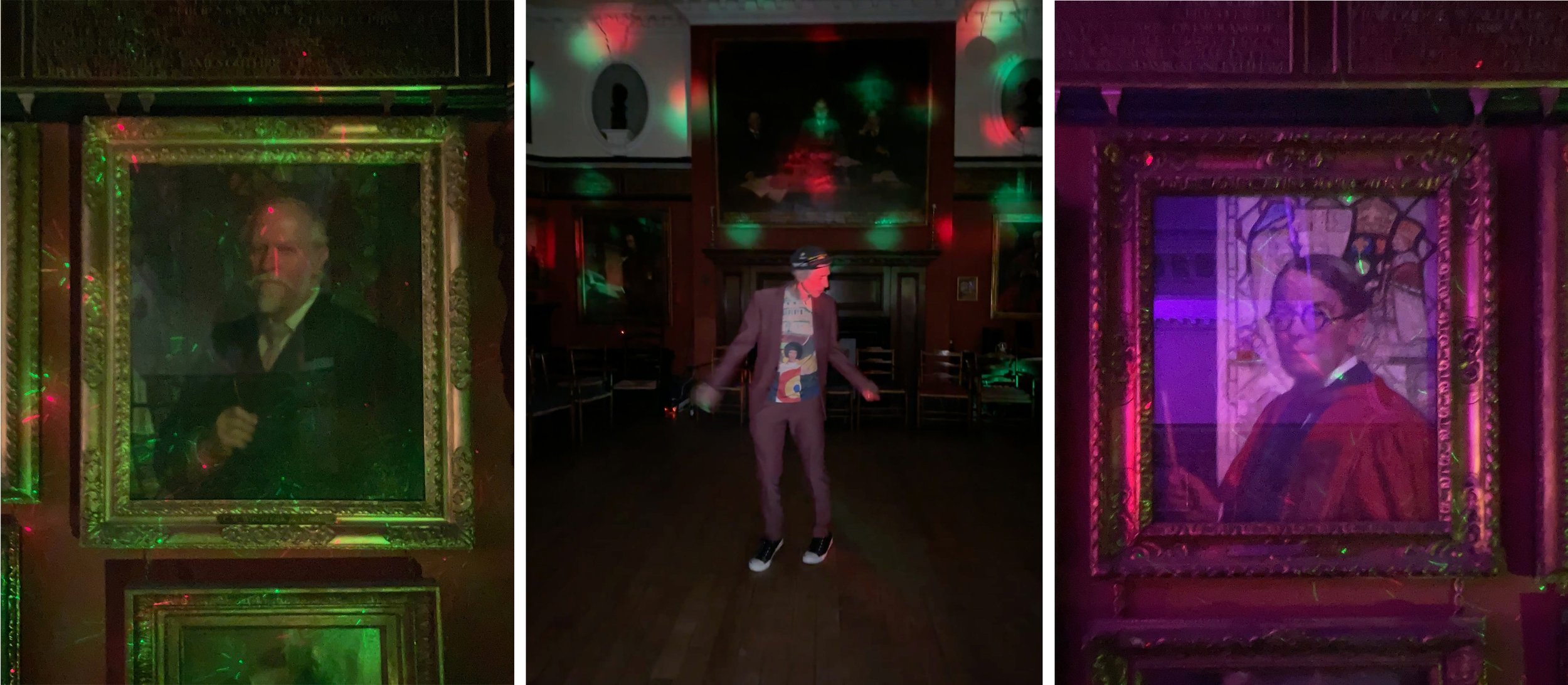Ray Ward, Fred Baier and me on stage after our talk on 13/04/2023.
Ray and I were asked by our friend and Artworkers’ Guild Master Fred Baier to give a talk together at the Art Workers’ Guild in Queen Square, London. He wanted us to talk about our so called collaborative stained glass panels, a daunting prospect as I didn’t initially think I had much to say about them.
When we planned the talk it took us right back to the beginning of our partnership, after we met in art school in 1981. Ray remembered being impressed with the things I made that had a use, such as my patchworks and the stained glass that is shown in my sketchbook drawings (below centre). I remembered clearly the moment when I saw a poster for Ray’s performance on the wall at Trent Poly (below right) and recognised in it decorative qualities in the brushstrokes that were hard to find in a fine art department in 1981.
Left, our student union cards; centre, my sketchbook; right, Ray’s poster.
I also talked about the way that Ray’s paintings remind me of the things I like about the best stained glass, for example the little painting below left that shows an artist lounging in his studio (with echoes of Matisse’s Red Studio) where the carpet and clothes are really devices to fill with pattern. Ray’s recent work is mostly in black and white with good titles that are funny and poignant; examples that he showed in the talk include ‘Technically I didn’t throw the baby out with the bath water as it wasn’t in the bath at the time’ and ‘Today is all filled up with yesterday and tomorrow’ (below centre and right).
Three works by Ray Ward
Left, window at Frimley Park Hospital; centre, during the manufacture of panels for Central Liverpool’s Premier Inn; right, my lightbox with the last panel I made before lockdown in progress.
It was quite easy then to find links from Ray’s work that enabled me to talk about ten of my commissions from the intervening years, starting with an early screenprinted panel for Frimley Park Hospital (above left). I emphasised themes that come up when you work to commission such as using other peoples’ subject matter and having to present a design from which you cannot deviate.
I’ve described the making of our so called collaborative panels in previous blog posts here and here. I’m still making stained glass from Ray’s black and white drawings and, as I see myself as the technician on this project, I talked mostly about the techniques involved in making them. What I hadn’t realised was the link between the subject matter of the pieces I’d chosen to interpret in glass, from ‘I said Tell me the Truth and You Gave me a Lie’ (prompting one of our friends to send us the message “Are you guys OK?”), to two scenes of tension between couples in ‘That’s not really a question is it, more of a statement’ and ‘Just Another Story’ all shown below.
Ray is used to being plagued with comments from friends (for example ‘I didn’t know you were depressed/ill/rightwing’) who mistakenly think his work is autobiographical, this is something I don’t usually have to put up so I think I’ll choose a funnier piece next with a picture of a less downcast figure.
Under the disco lights that followed our talk, portraits of two greats of stained glass Christopher Whall (left) and Robert Anning Bell (right). Ray wasn’t the only person dancing (centre).






























